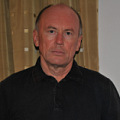Scientific results:
- Developing a panel of highly-sensitive diagnostic probes based on quantum dots that possess not only record-high brightness, stability and biocompatibility, but also ultra-small physical dimensions. Relying on such probes, we have created series of diagnostic tags sensitive to specific markers of oncological diseases and a number of pathogens, which allow to simultaneously detect a wide range of biomarkers. The potential areas of application of this technology are related to: transition to personalized medicine (multiparametric early diagnostics of oncological and infectious diseases, including resistance problems); transition to advanced manufacturing technologies (in the creation of a lineup of more sensitive diagnostic devices); countering biogenic threats and terrorism (in the creation of systems for the fast detection of pathogens).
- Researching two-photon processes in a hybrid material based on semiconductor quantum dots and plasmonic nanostructures that can be used in photovoltaics and optoelectronics.
- Developing methods for diagnostics and imaging of oncological diseases with the use of resonance energy transfer in immune complexes of single-domain and full-dimensional antibodies.
- Creating hybrid 2D «graphene–quantum dots» structures with controlled optical and photoelectric properties that can be used in photovoltaics.
- Creating multifunctional stimulus-sensitive microcapsules and nanocrystals for early diagnostics and efficient treatment of lung cancer and breast cancer.
- Creating new nanoprobes for molecular imaging using conjugates of quantum dots fluorescing in the IR range of the spectrum and single-domain antibodies and many others.
Implemented results of research:
- During the existence of the Laboratory we have obtained 40 patents and registered other objects of intellectual properties.
- The Laboratory has gone from innovative nanomaterials to creating prototypes of integrated systems for diagnostics, treatment and monitoring of its results for a number of oncological and infectious diseases.
Education and career development:
- Three Doctor of Sciences dissertations, 8 Candidate of Sciences dissertations, master’s degree theses have been prepared and defended.
- The recruitment of young and promising undergraduate and postgraduate students to the Laboratory allows our employees to receive highly valuable knowledge to prepare world-class academic works, including experience exchange with colleagues from other countries in internships and participation in conferences on the topic of our project.
Organizational and structural changes:
The creation of a cluster of two laboratories («Inter-deprtment Laboratory of Nano-bioengineering at the National Research Nuclear University MEPhI» and «International Laboratory of Photonic Nanomaterials at the National Research Nuclear University MEPhI») allowed to engage world-class scientists (Professor Igor R. Nabiev, University of Reims Champagne–Ardenne (France), Professor Yutiy P. Rakovich, Donostia International Physics Center (Spain)) in Russian professional education organizations, as well as their transformation to the Research Center for the Nanoengineering of Photonic Materials for Biomedicine and Optoelectronics (NANO–PHOTON) of the Engineering Physics Institute of Biomedicine of the National Research Nuclear University MEPhI.
Other results:
By winning grant competitions organized by the Russian Science Foundation, the Ministry of Health of Russia, the Ministry of Science and Higher Education of Russia, the Russian Foundation for Basic Research, as well as international projects, we ensured independent self-funding of the Laboratory after the end of support within the mega-grant.
Collaborations:
-
- University of Reims Champagne–Ardenne (France): joint research, academic events, internships of employees.
- Max Planck Institute for Experimental Medicine, University Medical Center Göttingen (Germany), University of Nantes (France), Trinity College Dublin (Ireland): joint research, academic events, internships of employees.
- Pohang University of Science and Technology (South Korea), Hosei University (Japan), ITMO University, Blokhin National Medical Research Center of Oncology of the Ministry of Health of Russia, N. F. Gamaleya National Research Center for Epidemiology and Microbiology of the Ministry of Health of Russia (Russia): joint research and academic events.




